History of Perrot State Park
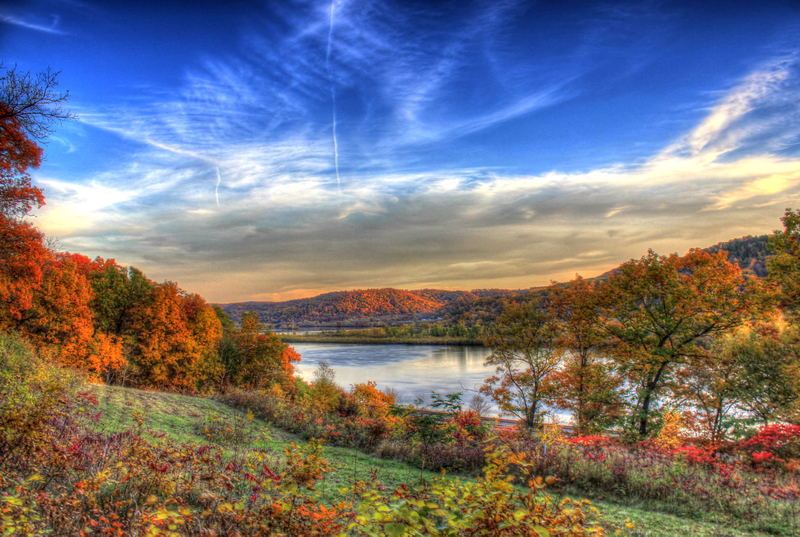
Perrot State Park has a rich and fascinating history that dates back to the earliest Native American cultures in North America. As the site of one of Nicolas Perrot’s most significant settlements in the area, the park has become a part of Wisconsin State Parks’ historical resources. Visitors can explore the park’s historical landmarks, including the magnificent earthwork mounds, to learn more about the park’s past.
The Native Americans Who Inhabited the Area
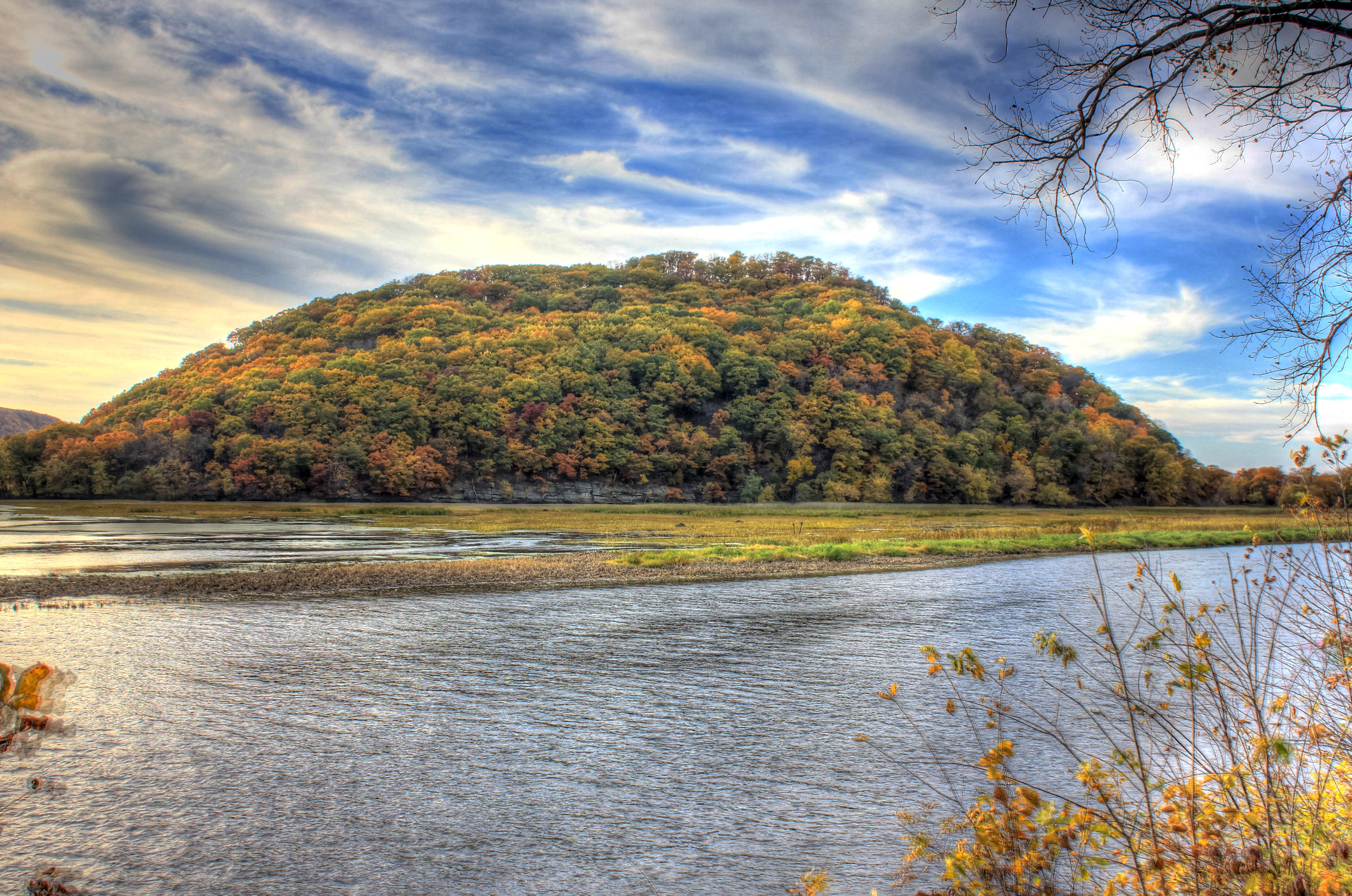
Perrot State Park in Wisconsin is not only a popular destination for outdoor enthusiasts, but it is also a place of significant cultural importance. The park’s picturesque location in the Driftless Area, directly adjacent to the mighty Mississippi River, once made it an ideal place for Native American tribes to live and gather resources.
Several tribes are known to have inhabited the area where Perrot State Park is now situated. Among them were the Ho-Chunk, Dakota, and Ojibwe, who relied on fishing, hunting, and farming to sustain their way of life.
The Native Americans who lived in the area were drawn to the region’s abundant natural resources. The Mississippi River, which flows past the park, provided a reliable source of fish, while the surrounding forests and prairies were home to a variety of game animals. The hills and valleys of the Driftless Area were also perfect for farming, with their fertile soils and ample rainfall.
Evidence of Native American culture can be found throughout Perrot State Park. Earliest known encampments and earthwork mounds have been discovered in the park, providing a glimpse into the rich cultural history of the area.
Today, visitors to Perrot State Park can explore the park’s marked hiking and biking trails, enjoy the stunning river views, and learn more about the region’s Native American heritage at the park’s various historical resources. Perrot State Park’s unique location and cultural significance make it an ideal destination for outdoor enthusiasts and history buffs alike.
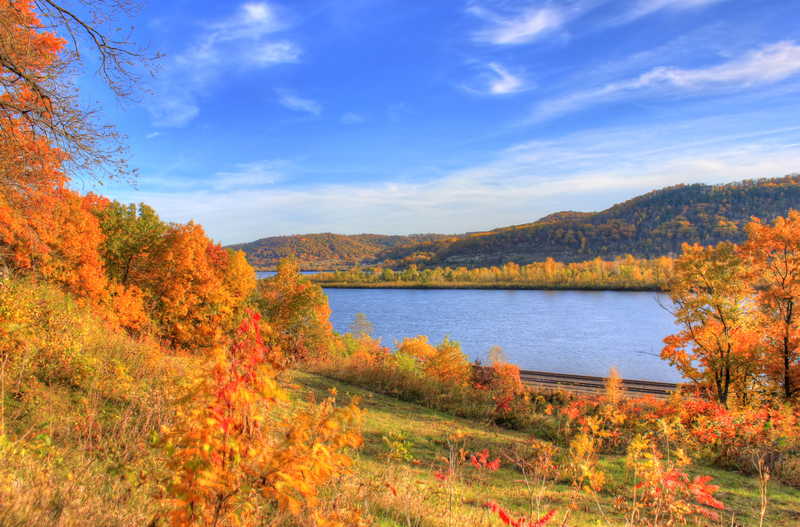
Nicolas Perrot and His Legacy
Nicolas Perrot was a French explorer and trader who played a crucial role in the early colonization of North America. Born in France in 1644, Perrot arrived in Quebec at the age of 22 and quickly made a name for himself as a skilled trapper and tradesman.
Perrot’s travels took him far beyond the confines of the French settlement, deep into the heart of the continent, where he established lasting connections with Native American communities. It was through these relationships that he gained access to the vast network of fur trade routes that crisscrossed the region.
As a diplomat, Perrot was able to negotiate peace agreements between rival tribes, and his reputation as a fair and honest broker of goods and services made him a respected figure among both the French and the Native Americans. In recognition of his contributions to commerce and diplomacy, Perrot was appointed as the first governor of Illinois in 1682.
Perrot’s legacy is one of cultural exchange and economic development. His work as a fur trader and diplomat helped to build bridges between different communities, and his efforts to broker peace helped to prevent violence and warfare between rival factions.
Some of the key events and developments associated with Perrot’s life and career include his exploration of the Mississippi River, his establishment of trading posts throughout the region, and his ongoing efforts to forge alliances with Native American leaders.
Today, Perrot’s ideas and actions continue to inform modern understandings of the relationship between European and American cultures. His legacy serves as a reminder that commerce and diplomacy can be powerful tools for building bridges between different communities, and that cultural exchange can lead to lasting friendships and partnerships.
The Creation of Perrot State Park
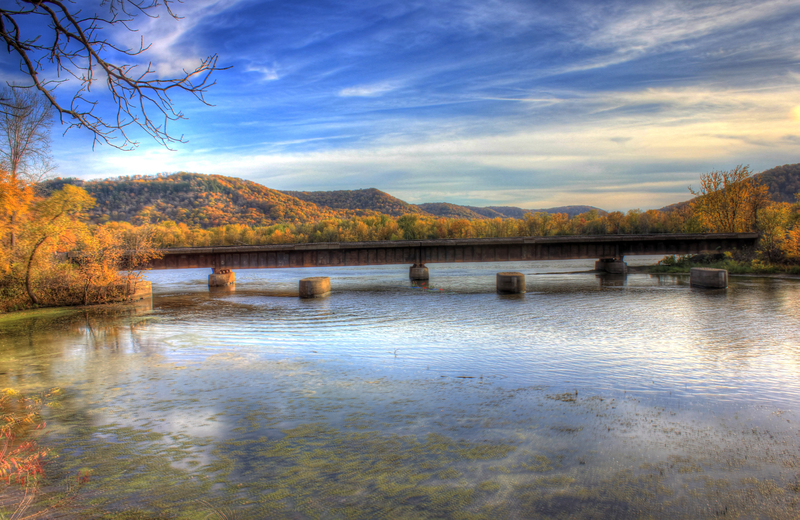
Perrot State Park is one of Wisconsin’s cherished nature reserves. The park’s origin is intrinsically linked to the French explorer and fur trader, Nicolas Perrot. The park’s creation began in the early 1900s when a group of individuals campaigned to preserve the site’s natural beauty. After years of advocacy and efforts, Perrot State Park was established as a Wisconsin state park in 1917, covering an area of over 1,200 acres along the banks of the Mississippi River.
Nicolas Perrot’s historic significance played a crucial role in the park’s establishment. Perrot was among the first Europeans to explore and establish trading relations in the region, going as far as becoming the governor of Illinois. His voyages led him to discover the park area, where he established a trading post in the late 1600s. Perrot’s presence in the area drew the attention of other fur traders and European settlers, leading to increased traffic, commercial activities, and eventual industrialization.
Perrot State Park boasts an array of distinguishing features that make it a unique destination. The park’s location at the foot of Trempealeau Mountain offers picturesque views of the entire Trempealeau Bay and the Mississippi River. The park has over 20 miles of hiking trails, including the 500-foot bluff prairie, Brady’s Bluff Trail, and the limestone trail, that takes you through the park’s heart. The marked canoe trail and the boat landing offer water enthusiasts a chance to explore the Mississippi River’s direct access. The park also has flush toilets, electricity, water hookups, and access for bikers.
Since its establishment, Perrot State Park has undergone many changes to meet campers’ growing demands. The park has expanded its camping facilities, built more trails, and introduced historical resources that educate the visitors on native cultures and earliest encampments. The 3.5-mile canoe trail has been marked, and additional bike trails and cruising trails have been developed since the park’s inception.
In conclusion, Perrot State Park, one of Wisconsin’s premier nature reserves, owes its existence to Nicolas Perrot’s explorations and fur trade. Today, the park offers a unique getaway to nature enthusiasts, with its 24-mile Great River State Trail, hiking trails, and access to the Mississippi River, attracting thousands of visitors annually.
Wildlife in Perrot State Park

Perrot State Park is not just known for its historical significance and scenic views; it’s also home to a diverse range of wildlife. From reptiles and amphibians to mammals and birds, the park offers an excellent opportunity to observe these animals in their natural habitats. Whether you’re a nature enthusiast or just looking for a fun family outing, the wildlife in Perrot State Park is sure to leave a lasting impression. Here’s what you can expect to see during your visit.
Bird Species in the Park

Perrot State Park is not only a great destination for hiking trails and water activities, but also for birdwatchers looking for some fascinating avian species. Here are some of the bird species that can be spotted in Perrot State Park.
Bald Eagles – With their impressive wingspan and white head feathers, Bald Eagles are a sight to behold. These birds of prey can be found in the park’s tall trees that are located next to the Mississippi River. They build their nests in large trees, and their presence in the park is a testament to the area’s rich wildlife.
American Robin – The American Robin is a common sight under the canopy of trees in Perrot State Park. These birds are known for their beautiful song, which is a sign of spring. Their orange belly and gray back make them easy to spot, and they are usually found hopping on the ground in search of insects.
Blue Jay – Another bird species to keep an eye out for is the Blue Jay. These birds are recognized by their bright blue feathers and their noisy behavior. They can be found in the trees of Perrot State Park where they feast on insects, seeds and nuts.
Pileated Woodpecker – One of the largest woodpecker species in North America, the Pileated Woodpecker calls Perrot State Park its home. These birds are known for their striking red crest and their unique drumming behavior. They search for insects in the trees and make holes that are large enough to reach their prey.
Northern Cardinal – With its bright red feathers and distinctive crest on its head, the Northern Cardinal is a colorful bird that can be found perched on tree branches in Perrot State Park. These birds are known for their beautiful song and mate for life.
Overall, Perrot State Park is a great destination for birdwatching enthusiasts looking to spot some unique and fascinating bird species. The biodiversity of the park is a testament to the importance of preserving natural habitats for wildlife.
Fish Species in the Park’s Waters

Perrot State Park is an ideal location for fishing enthusiasts to indulge in their favorite activity and catch a wide variety of fish species. The Mississippi River and Trempealeau Bay provide a perfect habitat for various fish, making this park a popular destination for fishermen.
One of the most commonly found fish species in the park’s waters is the Smallmouth bass. These fish are known for their bronze-colored bodies and spotted fins. They inhabit rocky areas, pools, and backwaters of the Mississippi River. Smallmouth bass are active throughout the day and feed on crayfish, salamanders, and other small fish.
Another popular fish caught in the park is the Walleye. These fish are identified by their golden-brown color, spiny dorsal fins, and sharp teeth. They inhabit the deeper parts of the river and are active during dawn and dusk. Walleyes are opportunistic predators and prey on smaller fish, crayfish, and insects.
The Mississippi River in the park also teems with catfish species, such as the channel catfish and flathead catfish. The channel catfish has a bluish-gray color and a forked tail, while the flathead catfish has a brownish-yellow color and a wide flat head. These fish species inhabit the river’s deeper pools and are most active during the night. They feed on a variety of prey, including smaller fish, insects, and crustaceans.
Other fish species that can be found in the park’s waters include northern pike, crappie, bluegill, and largemouth bass. These fish have their own unique characteristics, habits, and habitats that make them popular among fishermen.
Other Animal Species Found in the Park

Perrot State Park is not just for fishing enthusiasts and hikers, it is also home to a diverse array of animal species. From tiny rodents to large mammals, the park offers a habitat for a wide range of animals. Let’s take a closer look at some of the animal species found in the park, their habitats, behaviors, and the conservation efforts being implemented to protect them.
One of the most commonly seen mammals in the park is the white-tailed deer. These majestic creatures can be seen grazing on the grassy plains and wooded areas throughout the park. They have excellent hearing and vision which make them quick and agile. During mating season, the male deer will engage in displays of strength by locking antlers with other males to impress females. Conservation efforts have been implemented to control the deer population and minimize the impact they have on the park’s vegetation.
Beavers are another mammal species that can be found in the park. These semi-aquatic rodents can be seen building dams along the park’s rivers and streams. They create these dams to raise the water levels in order to protect their lodges. By doing so, they also create habitats for other species such as fish, turtles, and painted turtles. Conservation efforts have been implemented to protect beavers and prevent them from being trapped for their fur.
Coyotes are a smaller predator species that inhabit the park’s wooded areas. They are known for their distinctive howls which they use to communicate with one another. They are opportunistic predators and can feed on small animals such as rabbits, rodents, and birds as well as larger prey, such as deer. Conservation efforts to protect coyotes include efforts to control their population and minimize their impact on other animal species in the park.
Raccoons are another common woodland mammal found in the park. They are known for their distinctive black and white markings and their love for raiding trash cans. They are nocturnal animals, which means they are active at night and sleep during the day. They are opportunistic eaters and can feed on a wide range of food sources including fruits, nuts, insects, and small animals. The park has implemented efforts to protect raccoons by educating visitors not to feed them and to properly dispose of their trash.
Additionally, the park is also home to a wide range of other animal species including squirrels, chipmunks, rabbits, foxes, and more. Each species has its own unique habitat, behaviors, and conservation needs. Conservation efforts are critical to protect these species and ensure that they can continue to thrive in their natural habitat.
Hiking Trails
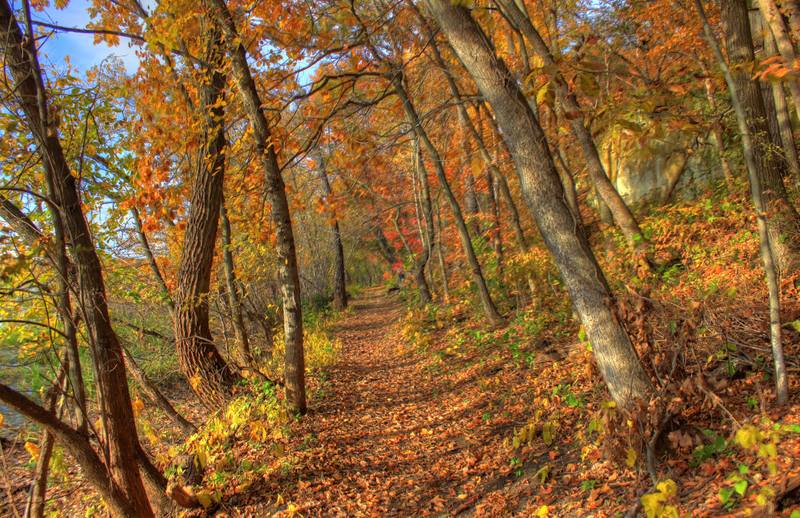
Perrot State Park offers miles of hiking trails for visitors to explore, each with its own unique difficulty level and scenic views.
One of the most popular hiking trails in the park is the 24-mile Great River State Trail. This trail offers direct access to the Mississippi River and is a favorite among bicyclists. With largely flat terrain and stunning river views, this trail is appropriate for all skill levels.
For those looking for a more challenging hike, the Bluff Trail East and Bluff Trail North offer stunning views of the park’s 500-foot bluffs. These trails traverse rocky terrain and are rated as moderately difficult.
The Limestone Trail is another moderate trail that takes hikers through the park’s bluff prairie. This trail offers unique views of the park’s historic Native American earthen mounds and early encampments.
In addition to these marked trails, Perrot State Park also offers additional trails for visitors to explore. The park’s official hiking trails include the 3.5-mile Canoe Trail, which offers views of Trempealeau Bay and the park’s river valleys. The Cross-Country Ski/Hiking Trail North Loop is another official trail, offering a 3.8-mile loop through rolling hills and wooded areas.
No matter your skill level or hiking preference, Perrot State Park has a trail for you to enjoy. Whether you choose the Great River State Trail for a leisurely bike ride or the Bluff Trail East for a more challenging hike, the stunning views and natural beauty of the park are sure to impress.
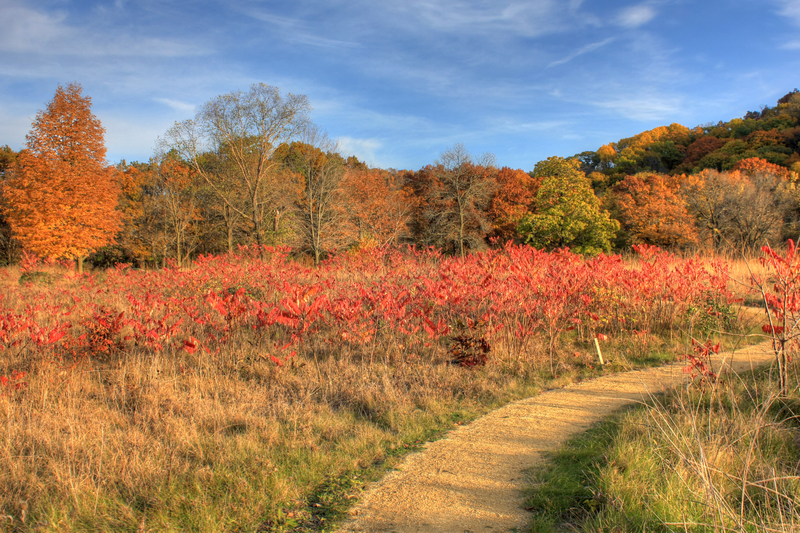
Facilities at Perrot State Park
Perrot State Park, located in the driftless area of Wisconsin, offers a range of facilities for visitors to enjoy. The park office is the central information point for visitors, with knowledgeable staff available to provide assistance and guidance on park activities and attractions.
Campsites are available for those looking to stay overnight, with options for electric and water hookups. For those who want to be close to the water, there are campsites located near the park’s boat landing. Flush toilets and drinking water can be found throughout the park for the convenience of visitors.
One of the park’s popular recreational options is the 3.5-mile marked canoe trail, which offers visitors the opportunity to explore Trempealeau Bay and the park’s river valleys. The trail is suitable for both novice and experienced paddlers and provides stunning views of the surrounding natural beauty.
Overall, Perrot State Park offers a variety of amenities and recreational options for visitors to make the most out of their stay. Whether you’re a nature enthusiast or a thrill-seeker, this 1,270-acre state park has something to offer everyone.
